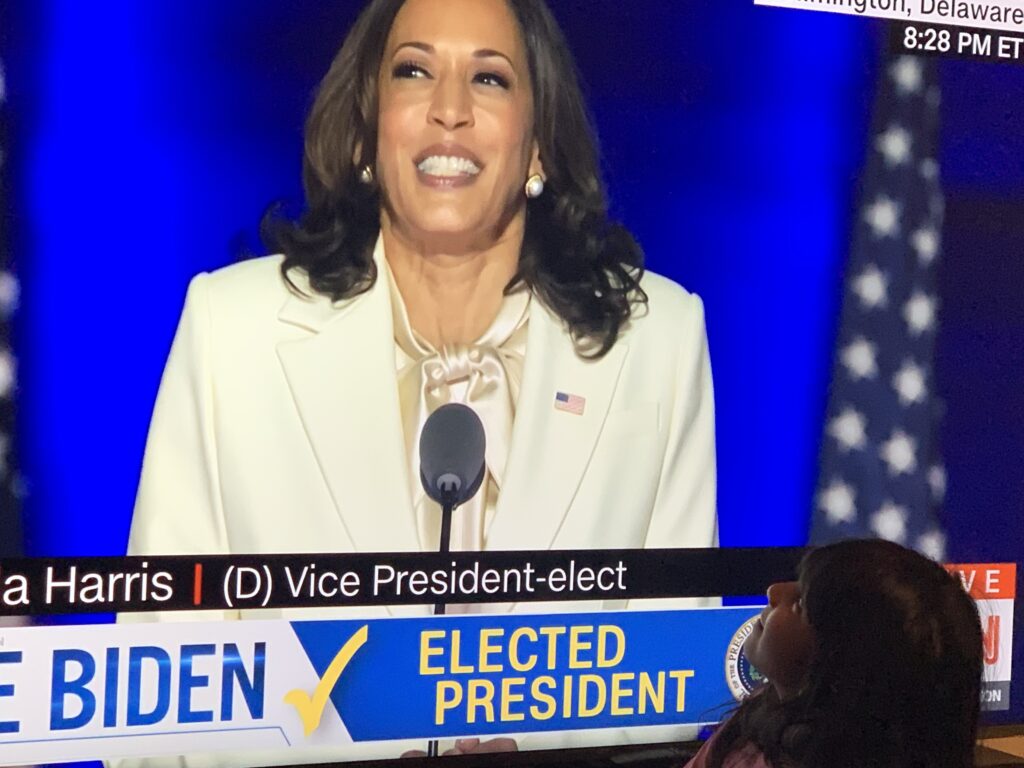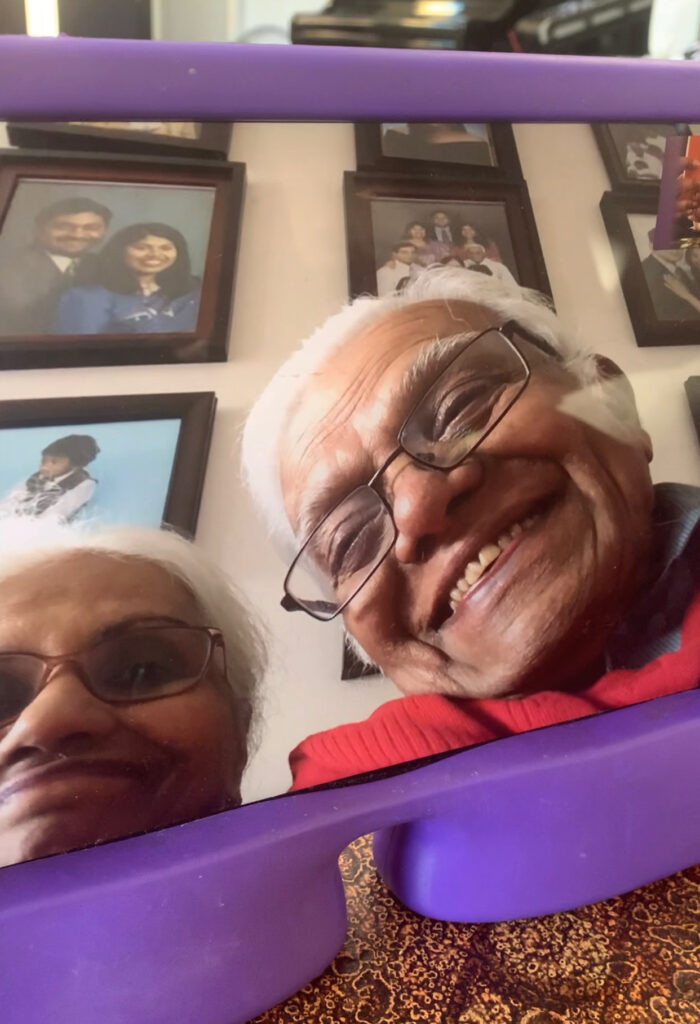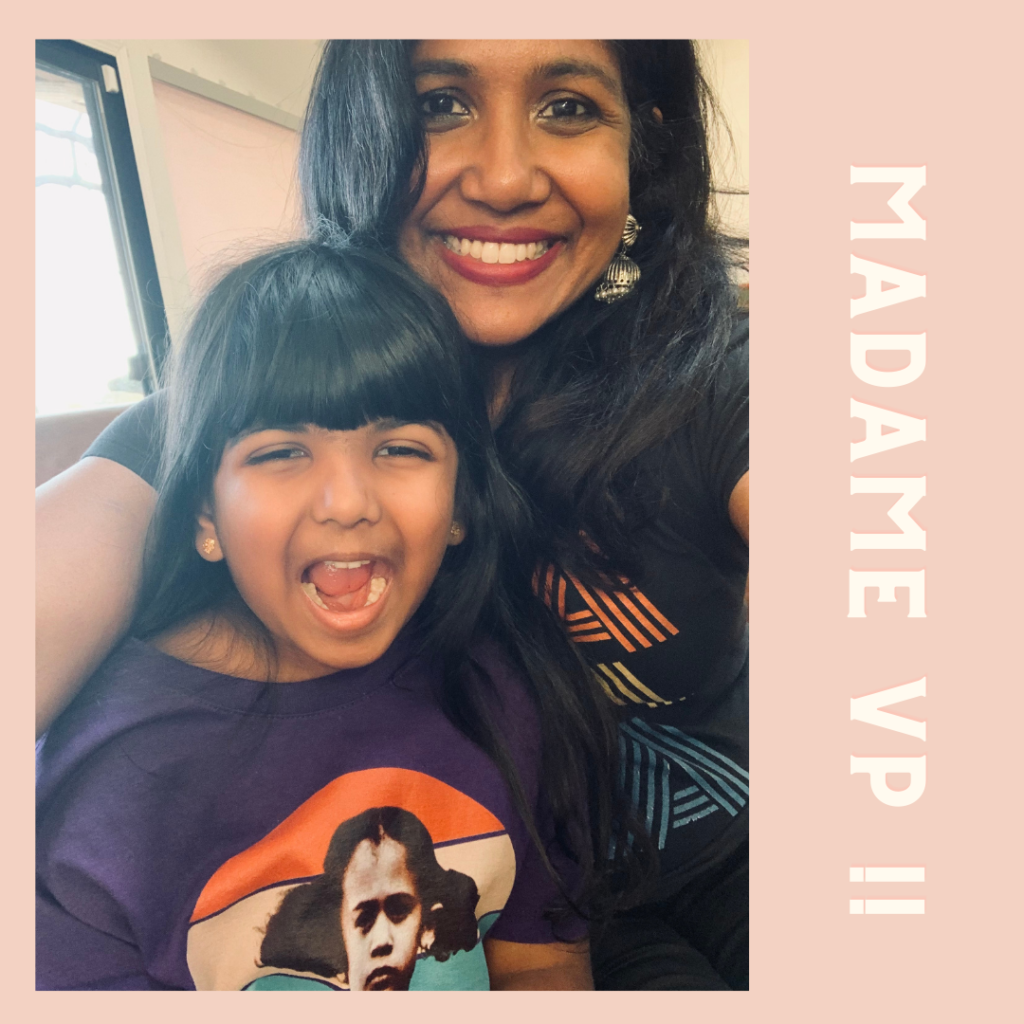
“Mama she looks like me!” exclaimed my 6-year old daughter as we were watching the inauguration of the first female Vice-President. She was proudly wearing her young Kamala tee shirt and had been looking forward to this day for weeks. Our watch party included my 80-year old parents zooming in from Toronto. It occurred to me what a uniquely unifying moment this was for three generations of South Asians.
We all laughed when my daughter claimed right after Harris took the oath “I’ve been waiting my WHOLE life for this!”. Yes, her whole long 6 years of life. The true patrons of patience were obviously my parents who appreciated this moment fundamentally as a shift from the old ways in which sacrifices were expected to a new way of an inclusive belonging.
My parents had immigrated to Toronto in the mid-1970s. Not soon after their arrival did they experience fear for their lives during the events known as paki-bashing or dot-bashing. This dark period of violent physical attacks targeting South Asians by white supremacists infamously spread in Toronto, England and New Jersey.
Out of fear, my mother changed her outside attire from saris to pant suits and I have vivid images of her removing her bindi every time she stepped out in public. I recall throughout my adolescence, that when there wasn’t fear, there was a diminished existence and silent position that my parents often assumed when in the company of non-Indians. Indeed, I remember my father submitting to many white Canadian colleagues who called him “Murphy” instead of his given name “Murthy”. In the 1970s they may not have been the people who would have spoken up and said “Excuse me Mr. Vice-President. I’m speaking” or challenged anyone who dared anglicize their name or mock their accents. From my parents’ vantage point, Harris’ election was a shared personal triumph and a defining moment in their immigrant story.

For myself, a first generation Canadian, my parents instilled in me the belief that I could be anything. It was not until adulthood that I understood that much of that belief was informed by their own hardships and so naturally, there were limitations to how far our collective imagination ventured. I strove because it was expected and because I understood the sacrifices my parents made for me. If I were to be honest with myself, even I did not expect that the first woman in the White House would be someone who looked like me. What does that say about my own implicit bias? That perhaps my own ambitions subconsciously were limited by a hierarchy in which I had a clear understanding of where I fit. The ladder upwards towards gender equality has many rungs and the top rung, as I understood it, did not belong to brown women. Our turn would come but not now. Harris as the first female US Vice-President decisively shattered that notion.
When I tell my daughter that she can be anything, it feels more freeing than when my parents instructed me. On Inauguration Day, my daughter celebrated the likeness of her skin color and gender to Kamala Harris but she also had welcomed a bright spot of happiness and belonging during what was an isolating year. With a backdrop of racially-motivated violence, spiraling COVID-related death rates, hate-inspired rhetoric and siege of the United States Capitol, our children were seeking a happy ending that they have been continually promised in the books they read. While my husband and I think we’re doing our part in teaching lessons of resilience, equality, kindness, strength, we join many parents this year who have been desperate for real life to back us up in these teachings. We needed real-life examples to turn to so our children could begin trusting the lessons again. In Vice-President Kamala Harris we see that the values we are teaching at home are being mirrored on the national stage. That as comfortable as the world is now seeing her on stage with her Converse Chucks, they are equally comfortable seeing pictures of her in a sari at her ancestral home in India. In refusing to anglicize her name and reminding folks how to respectfully pronounce it, she proves that everyone can be taught. In normalizing language like “Chittis” (Tamilian for aunts), she reminds us to stay true to who we are.

The election of our first female Vice-President, our first Black and Indian Vice-President, is not a conclusion to anything. Inauguration Day, however, gave us all, across several generations, a brief respite in a difficult time and an opportunity to validate all that we have been teaching so dreams again could take flight.
***************
Author Bio:
Priya Ghandikota has held marketing leadership positions at leading Fortune 500s and start-ups, including LinkedIn, Oracle, BlackBerry and Pebble Smartwatch. Having worked in Asia, Europe, Canada and the US, she has led international operations, regional brand campaigns, and global product launches for technology brands and is a vocal supporter of diversity, equity and inclusion initiatives in both the media and tech sectors. At Neythri, Priya is a Founding Circle Member and Marketing Co-Chair. She is both a President’s Leadership Advisor and Lotus Circle Advisor at The Asia Foundation, working to advance gender equality and economic opportunities for women and girls in Asia. Past op-eds: www.linktr.ee/Pghandik




